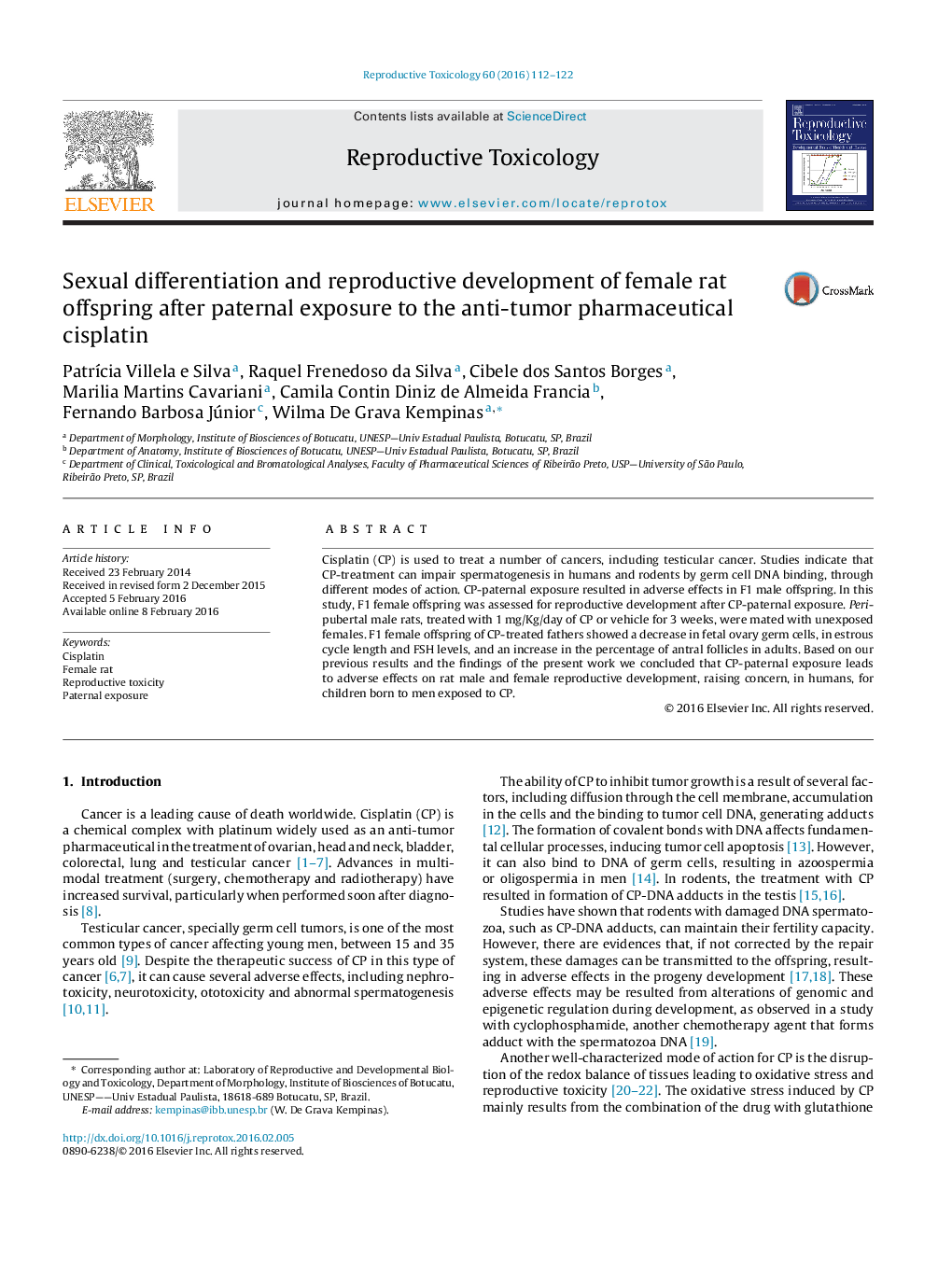| Article ID | Journal | Published Year | Pages | File Type |
|---|---|---|---|---|
| 2593329 | Reproductive Toxicology | 2016 | 11 Pages |
•It is known that cisplatin can form adducts with DNA of germ cells. DNA damage to spermatozoa can result in adverse effects in offspring resulting from those sperm.•In the present work, performed with rats, peri-pubertal paternal treatment with cisplatin promoted reduction in the estrous cycle length, FSH levels, fetal germ cell number, and an increase of antral follicles in the adult unexposed F1 progeny, without affecting fertility.•These results suggest possible reproductive implications for young boys undergoing cancer therapy.
Cisplatin (CP) is used to treat a number of cancers, including testicular cancer. Studies indicate that CP-treatment can impair spermatogenesis in humans and rodents by germ cell DNA binding, through different modes of action. CP-paternal exposure resulted in adverse effects in F1 male offspring. In this study, F1 female offspring was assessed for reproductive development after CP-paternal exposure. Peri-pubertal male rats, treated with 1 mg/Kg/day of CP or vehicle for 3 weeks, were mated with unexposed females. F1 female offspring of CP-treated fathers showed a decrease in fetal ovary germ cells, in estrous cycle length and FSH levels, and an increase in the percentage of antral follicles in adults. Based on our previous results and the findings of the present work we concluded that CP-paternal exposure leads to adverse effects on rat male and female reproductive development, raising concern, in humans, for children born to men exposed to CP.
